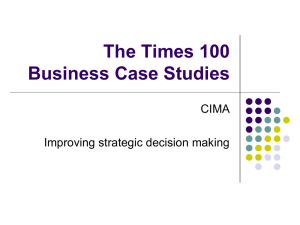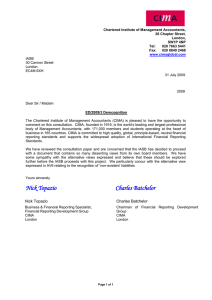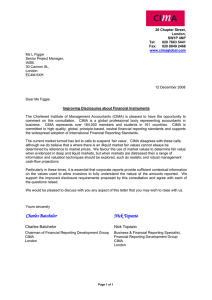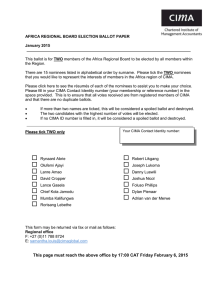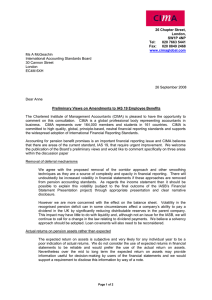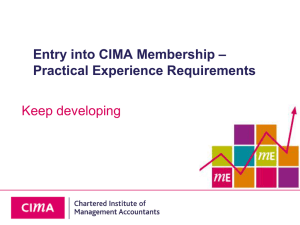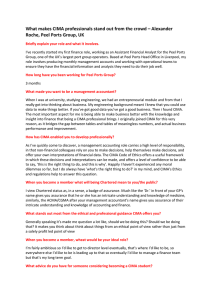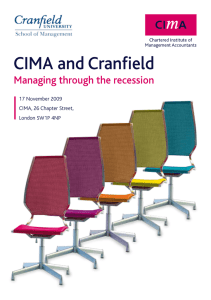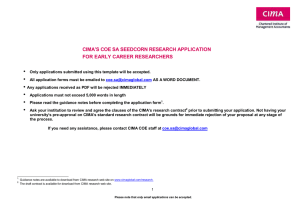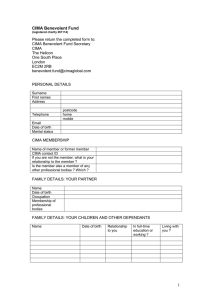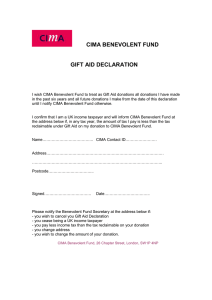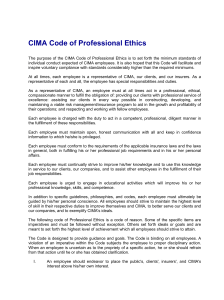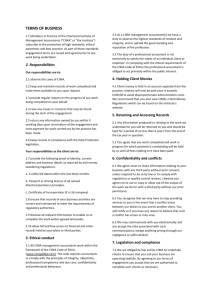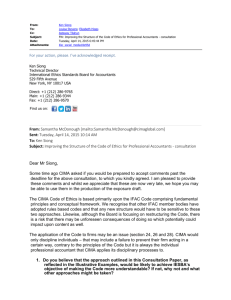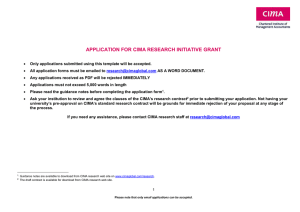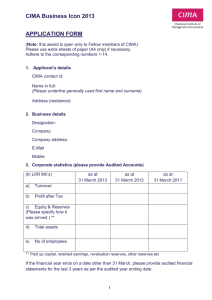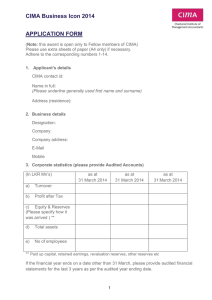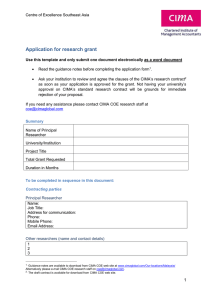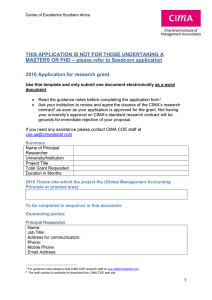CIMA to IASB Equity Final NT 08-09-05.doc
advertisement
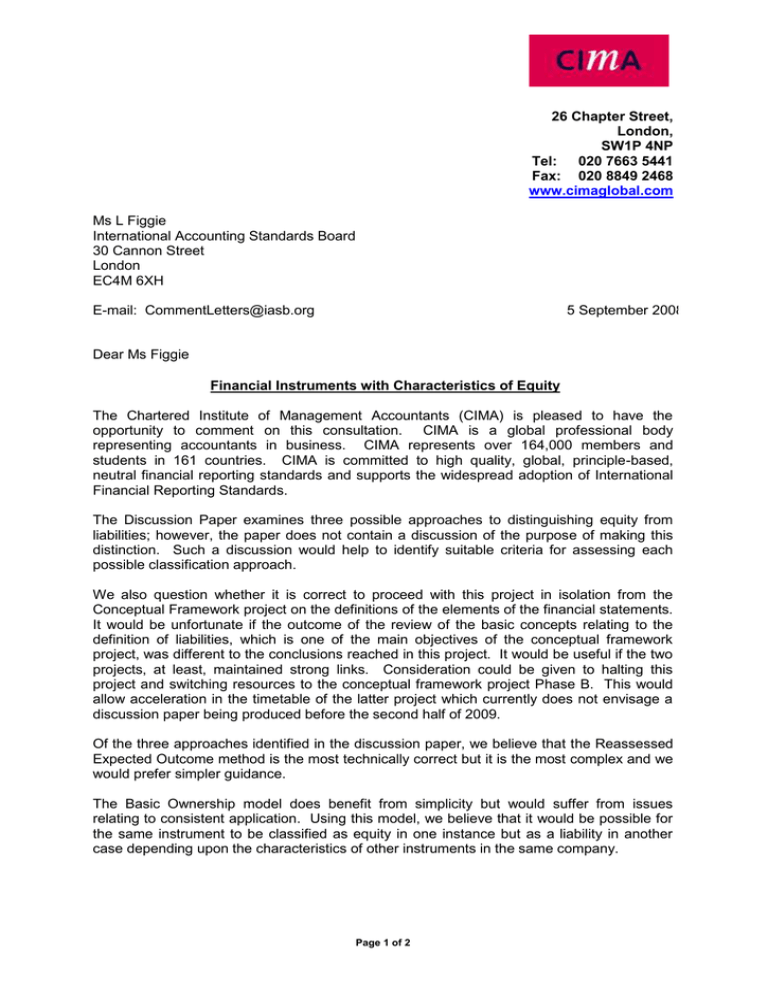
26 Chapter Street, London, SW1P 4NP Tel: 020 7663 5441 Fax: 020 8849 2468 www.cimaglobal.com Ms L Figgie International Accounting Standards Board 30 Cannon Street London EC4M 6XH E-mail: CommentLetters@iasb.org 5 September 2008 Dear Ms Figgie Financial Instruments with Characteristics of Equity The Chartered Institute of Management Accountants (CIMA) is pleased to have the opportunity to comment on this consultation. CIMA is a global professional body representing accountants in business. CIMA represents over 164,000 members and students in 161 countries. CIMA is committed to high quality, global, principle-based, neutral financial reporting standards and supports the widespread adoption of International Financial Reporting Standards. The Discussion Paper examines three possible approaches to distinguishing equity from liabilities; however, the paper does not contain a discussion of the purpose of making this distinction. Such a discussion would help to identify suitable criteria for assessing each possible classification approach. We also question whether it is correct to proceed with this project in isolation from the Conceptual Framework project on the definitions of the elements of the financial statements. It would be unfortunate if the outcome of the review of the basic concepts relating to the definition of liabilities, which is one of the main objectives of the conceptual framework project, was different to the conclusions reached in this project. It would be useful if the two projects, at least, maintained strong links. Consideration could be given to halting this project and switching resources to the conceptual framework project Phase B. This would allow acceleration in the timetable of the latter project which currently does not envisage a discussion paper being produced before the second half of 2009. Of the three approaches identified in the discussion paper, we believe that the Reassessed Expected Outcome method is the most technically correct but it is the most complex and we would prefer simpler guidance. The Basic Ownership model does benefit from simplicity but would suffer from issues relating to consistent application. Using this model, we believe that it would be possible for the same instrument to be classified as equity in one instance but as a liability in another case depending upon the characteristics of other instruments in the same company. Page 1 of 2 The Ownership Settlement approach appears to be the closest to current practice. Appendix A to the discussion paper is a comparison of existing and proposed approaches and there are very few differences between the classifications arrived at using the ownership settlement approach and that derived using the principles of IAS 32. This again leads us to question whether there is sufficient justification at this time to proceed with this project in advance of addressing the basic concepts. We would be pleased to discuss with you any aspect of this letter that you may wish to raise with us. Yours sincerely Nick Topazio Jim Metcalf Nick Topazio Jim Metcalf Business & Financial Reporting Specialist, Financial Reporting Development Group CIMA London Chairman of Financial Reporting Development Group CIMA London Page 2 of 2
